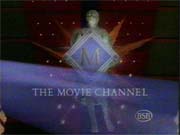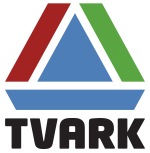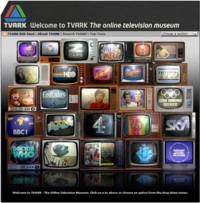
Analog television is the original television technology that uses analog signals to transmit video and audio. In an analog television broadcast, the brightness, colors and sound are represented by amplitude, phase and frequency of an analog signal.

The first American standard for analog television broadcast was developed by the National Television System Committee (NTSC) in 1941. In 1961, it was assigned the designation System M.

Phase Alternating Line (PAL) is a colour encoding system for analogue television. It was one of three major analogue colour television standards, the others being NTSC and SECAM. In most countries it was broadcast at 625 lines, 50 fields per second, and associated with CCIR analogue broadcast television systems B, D, G, H, I or K. The articles on analog broadcast television systems further describe frame rates, image resolution, and audio modulation.

British Satellite Broadcasting (BSB) was a television company, based in London, that provided direct broadcast satellite television services to the United Kingdom. It started broadcasting on 25 March 1990. The company was merged with Sky Television plc on 2 November 1990 to form British Sky Broadcasting.

Terrestrial television or over-the-air television (OTA) is a type of television broadcasting in which the signal transmission occurs via radio waves from the terrestrial (Earth-based) transmitter of a TV station to a TV receiver having an antenna. The term terrestrial is more common in Europe and Latin America, while in Canada and the United States it is called over-the-air or simply broadcast. This type of TV broadcast is distinguished from newer technologies, such as satellite television, in which the signal is transmitted to the receiver from an overhead satellite; cable television, in which the signal is carried to the receiver through a cable; and Internet Protocol television, in which the signal is received over an Internet stream or on a network utilizing the Internet Protocol. Terrestrial television stations broadcast on television channels with frequencies between about 52 and 600 MHz in the VHF and UHF bands. Since radio waves in these bands travel by line of sight, reception is generally limited by the visual horizon to distances of 64–97 kilometres (40–60 mi), although under better conditions and with tropospheric ducting, signals can sometimes be received hundreds of kilometers distant.

Advanced Television Systems Committee (ATSC) standards are an American set of standards for digital television transmission over terrestrial, cable and satellite networks. It is largely a replacement for the analog NTSC standard and, like that standard, is used mostly in the United States, Mexico, Canada, and South Korea. Several former NTSC users, such as Japan, have not used ATSC during their digital television transition, because they adopted other systems such as ISDB developed by Japan, and DVB developed in Europe, for example.
Broadcasttelevision systems are the encoding or formatting systems for the transmission and reception of terrestrial television signals.
BBC World Service Television, often abbreviated to WSTV, was the name of two BBC international satellite television channels between 1991 and 1995. It was the BBC's first foray into worldwide television broadcasting. In Europe, it was the successor to BBC TV Europe, which it replaced on 11 March 1991. The service was also launched in Asia as a 24-hour news and information service with minor differences, a precursor to BBC World News, launched on 14 October 1991.
Discovery Real Time was a British television channel owned by Discovery Networks UK focused on educational and learning content.

The Power Station was a British television channel that was operated by British Satellite Broadcasting. It was a dedicated music channel.

Galaxy was a short-lived British satellite television channel, owned and operated by British Satellite Broadcasting.
Analog high-definition television has referred to a variety of analog video broadcast television systems with various display resolutions throughout history.

BBC Select was an overnight television service run by the BBC during the hours when BBC1 or BBC2 had closed down, usually between 2am and 6am. The channel showed programming intended for specialist audiences, such as businessmen, lawyers, nurses and teachers, and was designed to be viewed after broadcast via a video recording. It was funded by a subscription, and most programming was scrambled.

The Movie Channel was a British television service which only aired movies. Launched on British Satellite Broadcasting, The Movie Channel was a predecessor of some of the Sky Movies channels, having survived the 1990 merger with Sky Television, another satellite service launched by Rupert Murdoch's News International.
High-definition television describes a television system which provides a substantially higher image resolution than the previous generation of technologies. The term has been used since 1936; in more recent times, it refers to the generation following standard-definition television (SDTV), often abbreviated to HDTV or HD-TV. It is the current de facto standard video format used in most broadcasts: terrestrial broadcast television, cable television, satellite television and Blu-ray Discs.
The following outline is provided as an overview of and topical guide to television broadcasting:
BBC Schools, also known as BBC for Schools and Colleges or BBC Education, is the educational programming strand set up by the BBC in 1957, broadcasting a range of educational programmes for children aged 5–16. From launch until June 1983, programming was based on BBC1 during the daytime, apart from coverage of major news events which saw the programmes shifted to BBC2. In September 1983, programming was transferred permanently to BBC2 freeing BBC1 to develop its own daytime schedule. The strand, named Daytime on Two, remained on BBC Two until March 2010, later supplemented by the 'Class TV' strand on CBBC.

Television Centre, Southampton was home to the three ITV contractors for the South and South East region: Southern, TVS, and Meridian. It was also known as The Southern Television Centre, The Southampton Television Centre, and unofficially as The Northam Studios.

Television in North Korea is subject to the Korean Central Broadcasting Committee and controlled by the Propaganda and Agitation Department of the Workers' Party of Korea. A study in 2017 found that 98% of households had a television set. As of 2020, there are over-the-air broadcasts in both analogue and recently launched digital formats.
This is a timeline of the history of Carlton Television, and of its former owner Carlton Communications. Carlton Television has provided the ITV service for London on weekdays since 1993, and Carlton Communications took over the services for the Midlands, South West England, the West of England and Wales before merging with Granada plc to form ITV plc.












